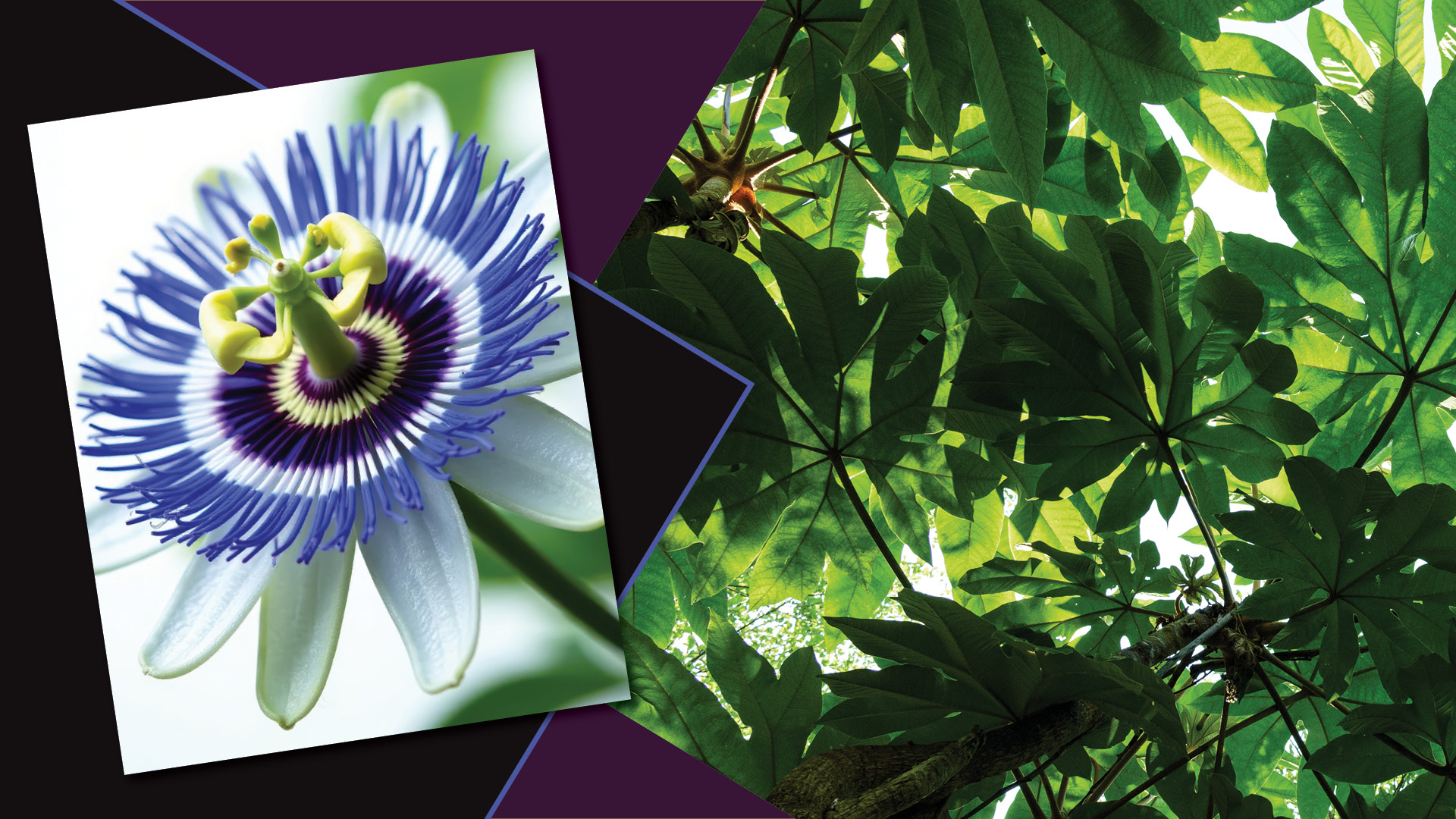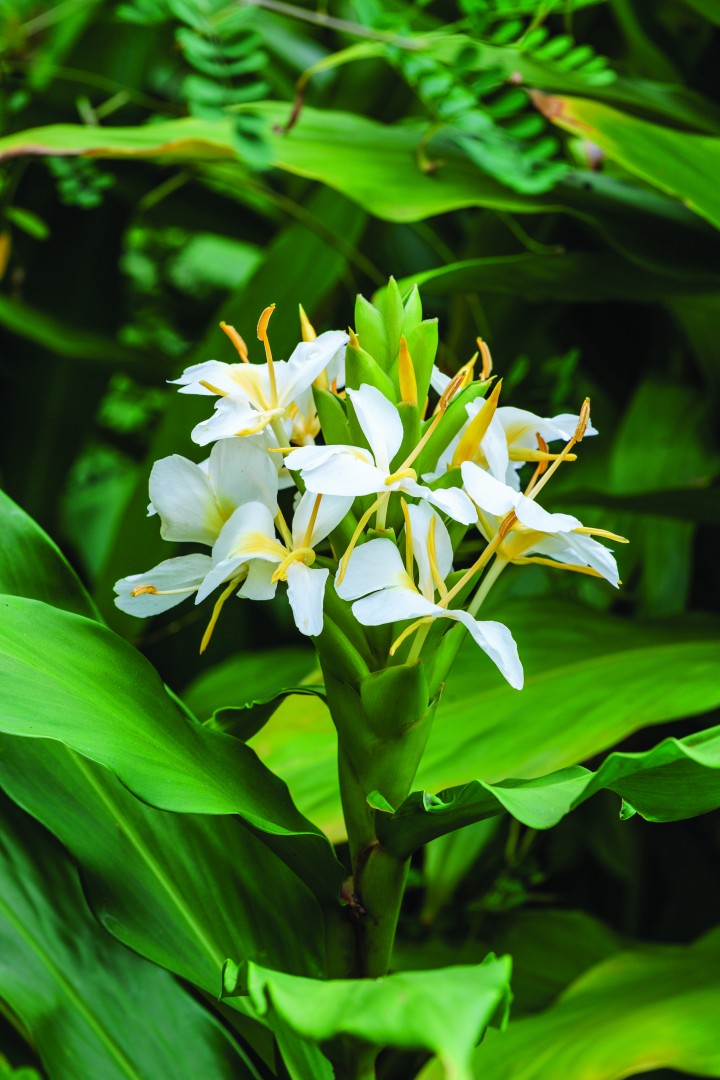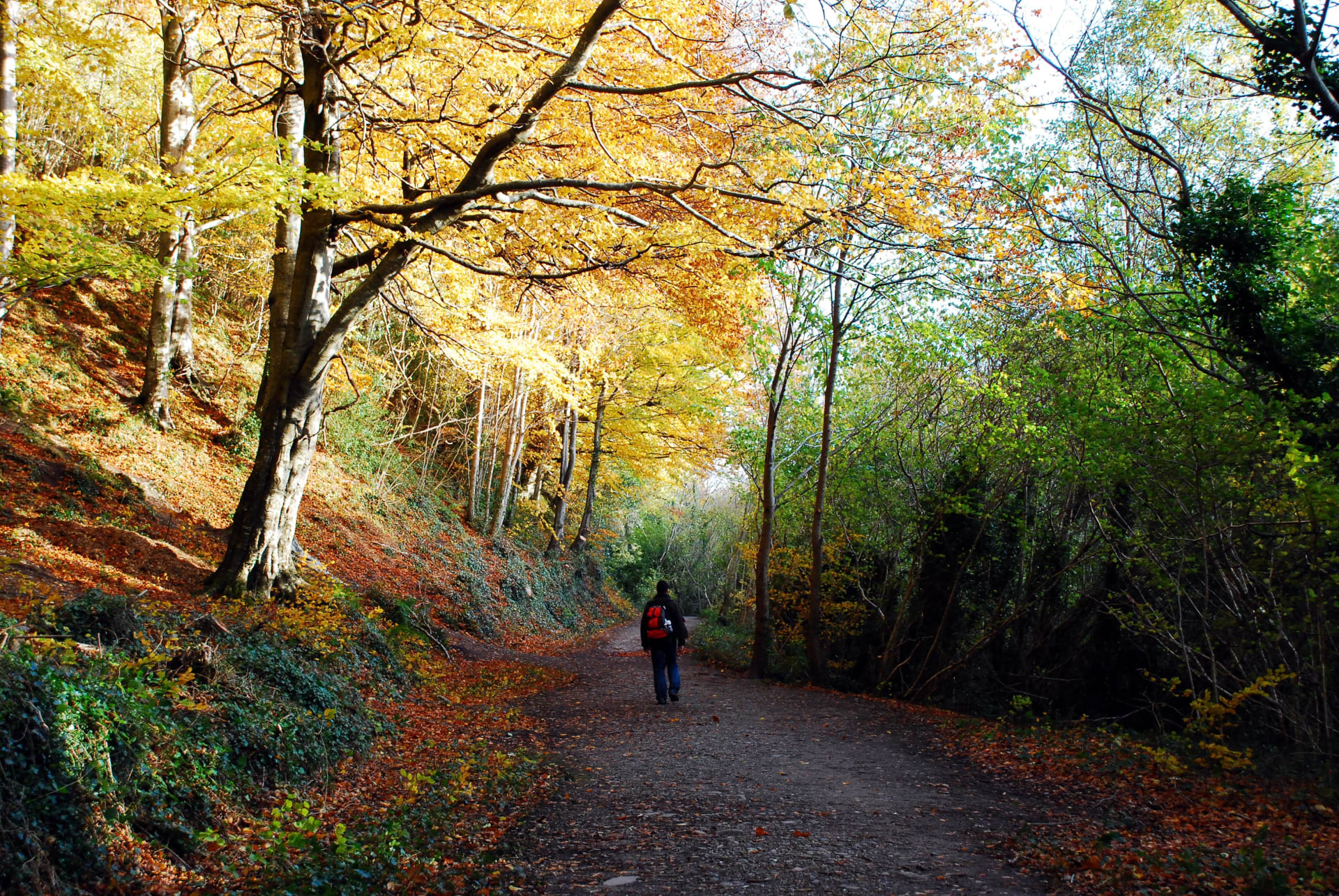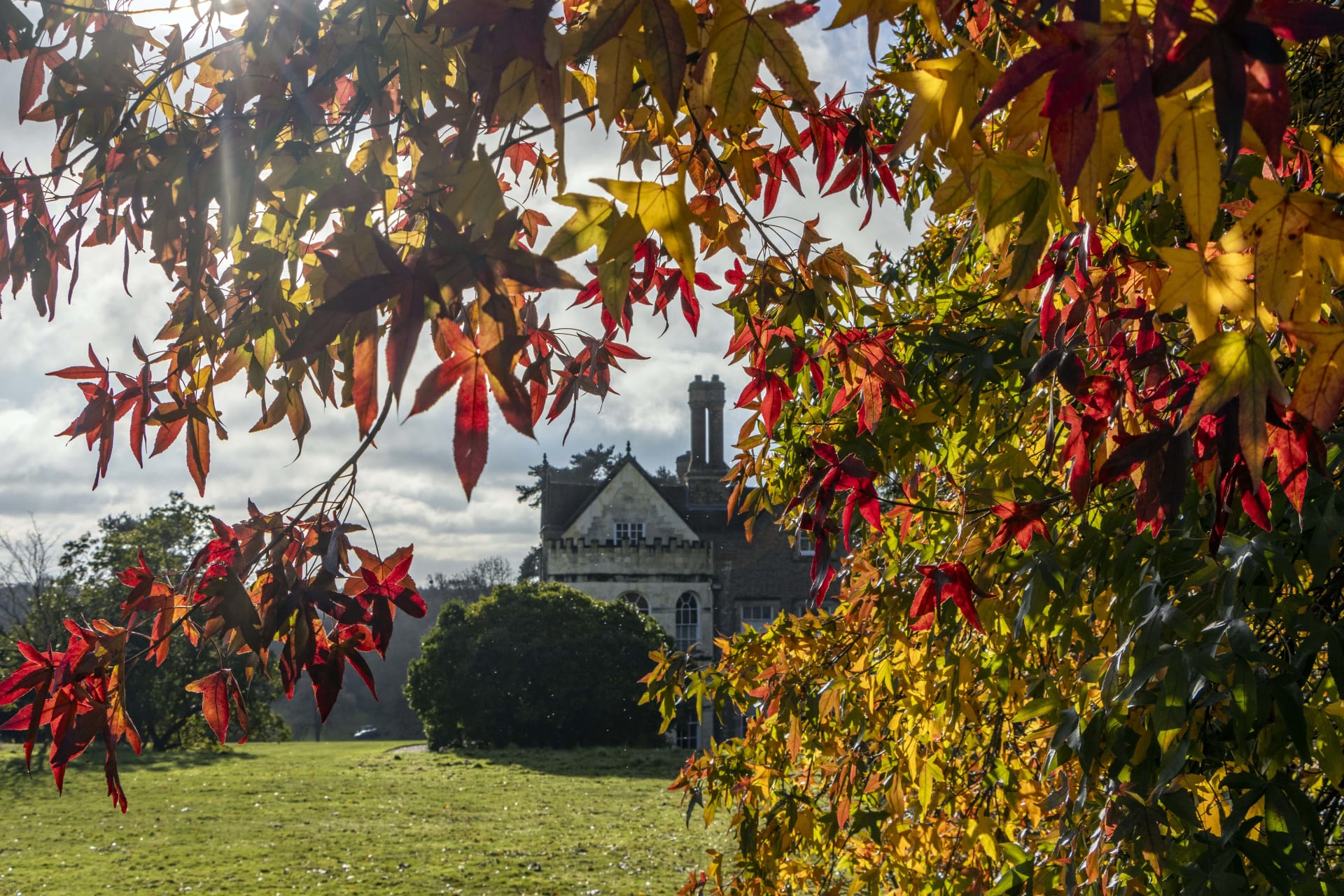Do you ever wish that you could grow some of the plants you have seen on your holidays at home in Oxfordshire? If you have a sheltered garden providing some warm sunshine and shelter from cold winds there are a few you can try. Some will require accommodating in a greenhouse/indoors during the colder months but if you make a careful selection, you can find plants that will tolerate very cold temperatures and survive a British winter to add a tropical feel to your planting scheme.
If you are looking to plant a palm tree, Trachycarpus fortune also called the Chusan Fan or Windmill Palm is the one to select. Although slow growing, its large fan-shaped leaves top a tall, single trunk covered in fibre. It also produces downward-curving sprays of numerous small yellow flowers; these are borne among the foliage near the top of the stem. It grows to a height and spread of 1m in five years, ultimately growing to 4m or more in height. Another variety, Trachycarpus fortune, Tesan, a really beautiful, rare form of the Chusan Palm from Northern China is faster growing. It also has a thicker, densely ‘hairy’ trunk with larger deeper divided leaves.
To grow Trachycarpus successfully you will need a sheltered position with protection from north and easterly winds. During the first three years, protect with a screen of hessian matting along with a deep mulch of bracken or straw during winter months. They are however hardy to -20o C and need well-drained humus rich soil to grow successfully.
If you have a sheltered garden with dappled shade, you may favour growing a Tasmanian Tree Fern (Dicksonia antarctica). Although its name suggests that it is super frost hardy, sadly that is not the case. The genus was named after a Scottish plant collector James Dickson (1738-1822) and ‘antarctica’ refers to its southern origin, rather than the Antarctic itself. Although generally hardy to -5°C we are likely to experience colder sub-zero winter temperatures from time to time. However, you can protect both the trunk, the leaves and the crown using straw in the crown, overlaying its leaves across the crown and wrapping the whole plant in horticultural fleece or hessian, well bound with rope to stop it from being exposed.
You will also need to establish how to keep the tree fern irrigated during the warmer months of the year. This can be done by fixing an irrigation dripper system or a sprinkler to the crown and uppermost parts of the trunk, feeding a diluted seaweed extract early in the season. You can also treat established ferns by adding a teaspoon of slow-release fertiliser directly into the crown before new season fronds emerge. Tree ferns need a reliably moist, rich fertile, neutral-to-acid soil. Add good garden compost or well-rotted farmyard manure to your soil before planting. The trunk is where the roots are, so do not expect a traditional root ball with these plants. When backfilling the planting hole, ensure the tree stands firm as they do not require staking. They grow well in boggy conditions or near water sources.
The Blue Passionflower (Passiflora caerulea) which originates from South America, can bring an exotic touch to a sunny south or west facing wall or fence, generally tolerating temperatures down to about -10°C. It requires free draining soil and will need protection from cold winds. Whilst it can be evergreen in sheltered, warmer area, in colder parts it will lose its leaves in winter, regrowing in spring. Once established it can be fast-growing, reaching 10m high with a spread of 4m but it will need some sort of support on which to grow. It bears large white flowers with central filaments of purple, blue and white from July to September and although it will produce fruit, these are not edible. The plant needs regular watering in dry weather, feeding with a liquid fertiliser in spring and summer. Tidy wayward tendrils in early spring before growth starts to keep it tidy.
If you have travelled to Cape Town in South Africa, you will have seen Agapanthus growing in profusion. Known as the African Lily or Lily of the Nile, these plants are native to South Africa and are likely to have been introduced to Europe in the 17th century by the Dutch settlers. Whilst not all varieties are hardy, you can grow quite a few in Oxfordshire of which Agapanthus Headbourne Hybrids are amongst the easiest to grow. Plant in full sun in the front or middle of a border or in pots – they flower better when their roots get congested, so they do well in pots. They are also not fussy about what type of soil they are grown in, providing it is well drained. Although they may lose their leaves over winter, new strappy foliage soon grows in spring with heads of sky-blue, bell-shaped flowers borne on short, upright stems from mid to late summer. A feed with a high potassium fertiliser early summer will help the blooms.
If you enjoy cooking with root ginger, have you ever thought of growing Ginger Lilies (Hedychium) in your garden? They are wonderful for adding height to a border as they reach full height in just one season. Despite their height they do not spread more than 1m, and prefer to be planted close, so you can get quite a show if you plant them in blocks. They require a moist, well-drained soil against a south or west facing wall, in as much light as possible. If you are planting in the spring, raise them initially in a pot in a greenhouse before planting in the garden once all risk of frost has passed. In the autumn, just ensure they are properly mulched. Foliage will die completely back but re-shoot in the spring. Look out for H densiflorum which produces coral-red or orange flowers up to 8cm long; they can grow up to 2.4m high. H spicatum is smaller, growing to 1.5m and produced white flowers with orange bases and reddish stamens.
If you are looking for jungle-like growth and you have the space, consider the Chinese Race Paper Plant (Tetrapanax Papyrifer Rex). Requiring full sun in a south or west facing sheltered situation, it will ultimately grow to a height and spread of 4 to 8m. This fast-growing shrub or small tree produces a thicket of upright stems topped by very large, deeply lobed green leaves up to 1m across. New shoots and leaves have a coating of fine, pale brown hairs. Creamy pompoms of flowers are produced in large sprays in autumn, followed by black fruit. In cold winters, foliage will die completely back regrowing as the temperature increases.
Finally, another shrub to use if you are looking for something which tolerates shade to full sun is the castor oil plant (Fatsia Japonica). It can grow 2.4-4m in height and spread but you can prune back in spring once it has flowered. With palmately lobed leaves it can add interesting texture to your planting scheme. Fatsia Japonica Variegata (v) has leaves narrowly edged with cream and is a variety to consider as an alternative to green. It is also readily available in many good garden centres.








